Kawasaki Vulcan S (EN650, 2015+) Maintenance Schedule & Service Intervals
This is the maintenance schedule for the Kawasaki Vulcan S, a middleweight motorcycle (or entry-level cruiser) from Kawasaki, revealed in 2014 for the 2015 model year.
Since 2015, Kawasaki has released a number of different variants for the Kawasaki Vulcan S, including the Cafe (little windshield/cowl) and Special Edition (two tone paint). They’re the same motorcycle, just with a few minor cosmetic differences, and the maintenance schedule is the same.
All versions of the Kawasaki Vulcan S are based around a 649cc DOHC parallel twin that you’ll also find in Kawasaki’s latest Ninja 650, Z650, and Versys 650 motorcycles. Through a number of internal variants, the engine is much more torque-forward than in the Ninja. It produces a peak of 45 kW (61 hp) at 7500 rpm, and peak torque of 63 Nm (47 ft-lb) at 6600 rpm — though the torque comes on a lot earlier.
Aside from revising the styling and making sure the Vulcan S is compliant with emissions regulations, the Kawasaki Vulcan S hasn’t been dramatically revised since launch.
In some markets, the Vulcan S is available predominantly (or basically only) as a learner-legal reduced-power model. This maintenance schedule is the same for those (e.g. the Aust/NZ LAMS models).
This post was originally published on August 17, 2021, but has since been significantly updated.
This site has links for things like oil and spark plugs from which we earn a commission (which unfortunately nobody can save, not even us). If you appreciate this work, then please use those links. Thanks!
Kawasaki Vulcan S Service Intervals
The Vulcan S has 7500 mi / 12000 km or annual service intervals.
At every service, you change the oil and air filter, and do a host of checks.
The major service for the Vulcan S is evry 15000 miles or 24000 km. The Vulcan S has an eight-valve parallel twin engine, so this service is not terribly difficult.
Every 2-4 years you have to do some fluid changes (brake fluid, coolant) regardless of distance.
In recent years Kawasaki simplified the schedule somewhat, reducing the frequency with which they think you need to check the evaporative emissions system.
What you need to service the Kawasaki Vulcan S 650
If you’re servicing the Kawasaki Vulcan S 650, firstly, you might need these common motorcycle maintenance tools (thinks like an oil filter wrench, catch pan, etc.).
But aside from that, you’ll need these specific items to maintain the Kawasaki Vulcan S
| Part | Kawasaki Ninja Vulcan S Spec |
|---|---|
| Oil | You need 1.8L (1.7 US qt) of SAE 10W-40 engine oil “with API SG, SH, SJ, SL or SM with JASO MA, MA1 or MA2 rating”, preferably Kawasaki 10W-40 Engine Oil, or a high quality alternative like Motul 7100 10W-40. Don’t over-torque the drain bolt (spec is 30 Nm/22 lb-ft per the manual) — use a torque wrench if you don’t have experience with how much torque is enough. |
| Oil filter | Oil filter is part 16097-0008, or you can use Hiflofiltro HF303RC. Torque for oil filter is 17.5 Nm (12.9 ft-lb) (use a torque wrench) |
| Front brake pads | You can get original OEM parts from a dealership, or double-sintered EBC brake pads for better bite and wear. Part numbers are FA226HH (you need two pairs). OEM front brake pads are part number 43082-0169. |
| Rear brake pads | As with the front brake pads, you can get original OEM parts from a dealership, or double-sintered EBC brake pads for better bite and wear. EBC part number is FA174HH. OEM rear brake pads are part number 43082-0155. |
| Spark plugs | NGK CR9EIA-9, with a spark plug gap of 0.8-9.0mm (use a spark plug gapping tool), torqued to 13 Nm or 9 ft-lb (use a torque wrench) |
| Air filter | For all model years of the Vulcan S, the Kawasaki part number is 11013-0745. Many Kawasaki Vulcan S owners like the after-market DNA air filter with part number P-K6N15-01. |
| Fuel filter | Part number for the fuel filter kit is 99999-0525. |
| Cable lubricant | Remember to lubricate your clutch cable (and brake cables if you have them) with a cable lubricant. Protect All Cable Life is a good general-purpose lubricant. |
| Chain lubricant | The chain needs to be lubricated every 600 km/400 miles (or more, if it gets wet/dirty). Motul chain paste is affordable and well-loved (and mess-free). |
| Brake fluid | Spec is to use DOT-4 brake fluid like Castrol DOT 4. |
| Coolant | Use nitrate-free, phosphate-free, ethylene glycol-based coolant with anti-corrosion inhibitors, e.g. Zerex Asian Vehicle blue coolant. |
| Grease | Use a lithium soap based grease for all the important greasing points. |
| Battery | Dead battery on your Vulcan S? You need a Yuasa battery, type YTZ10. |
Maintenance schedule for the Kawasaki Vulcan S 650
Below is the maintenance schedule for the Kawasaki Vulcan S 650.
Legend for the maintenance schedule:
- I: Inspect (clean/replace/adjust as necessary)
- R: Replace
- L: Lubricate
The right-hand side of the schedule shows when you should periodically do things, e.g. “I,1” means “Inspect every 1 year”.
| mi x 1000 | 0.6 | 7.5 | 15 | 22.5 | 30 | Every |
|---|---|---|---|---|---|---|
| km x 1000 | 1 | 12 | 24 | 36 | 48 | Year(s) |
| Perform standard annual service checklist (see below) *Not all items have to be done at break-in — see below | ✓* | ✓ | ✓ | ✓ | ✓ | 1 |
| Engine oil and oil filter (Kawasaki 10W-40 engine oil or Motul 7100 10W-40, + HF303RC oil filter) | R | R | R | R | R | R,1 |
| Air filter (P-K6N15-01) | R | R | R | R | ||
| Spark plugs (CR9EIA-9) | R | R | R | R | ||
| Valve clearance | I | I | ||||
| Fuel filter (99999-0525) | R | R | ||||
| Coolant, water hoses, and O-rings (replace coolant with Zerex Asian Vehicle blue coolant) | R,3 | |||||
| Brake fluid (front and rear) | R | R | R,2 | |||
| Brake hoses | R,4 | |||||
| Rubber parts of brake master cylinder and caliper | R | R,4 | ||||
| Idle speed | I | I | I | I | I | |
| Engine vacuum synchronisation | I | I | I | I | ||
| Fuel hose | R,5 | |||||
| Evaporative emission control system (CA only) | I | I | ||||
| Lubrication of rear suspension | L | L | ||||
| Steering stem bearings | L | L | L,2 | |||
| Air suction system | I | I | I | I | ||
| Clutch operation (play, engagement, disengagement) | I | I | I | I | I | |
| Drive chain wear | I | I | I | I | ||
| Drive chain guide wear | I | I | I | I | ||
| Bolts, nuts, and fasteners | I | I | I | I | I |
Standard annual service checklist
| Maintenance item | At break-in Y/N |
|---|---|
| Throttle control system — Inspect (play, smooth return, no drag) | Y |
| Fuel system — Inspect (for leaks, condition of hoses) | Y |
| Coolant level — Inspect | Y |
| Cooling system — Inspect (for leaks, condition of hoses) | Y |
| Brake system — Check correct function | Y |
| Brake operation (effectiveness, play, no drag) | Y |
| Steering play — Check for no notches, smooth operation | Y |
| Tire air pressure — Check, adjust (see below) | |
| Wheels and tires — Check for no damage | |
| Wheel bearings — Check for smooth operation | |
| Suspension system — Inspect for smooth operation front and rear, no leaks | |
| Electrical system — Inspect function | |
| Chassis parts — Lubricate |
Periodic maintenance (daily, short-term)
There are a number of daily and short-term bit of maintenance to do on your Vulcan 650. These are below.
| Regular Checks |
|---|
| Fuel — Check adequate supply in tank, no leaks |
| Engine oil — check level is between level lines |
| Tires — check air pressure (when cold) and valve cap is installed |
| Tires — check wear |
| Drive chain slack — check/adjust every 1000 km (600 mi) |
| Drive chain — Lubricate every 600 km (400 mi) or if dry |
| Bolts, nuts, and fasteners — check for loose/missing bolts, nuts, and fasteners |
| Steering — check action smooth but not loose from lock to lock |
| Steering — check no binding of control cables |
| Brake pads — check wear is within spec |
| Brake fluid — check fluid level is between lines, and not leaking |
| Throttle — check free play is adequate |
| Clutch lever — check free play is adequate, and it operates smoothly |
| Coolant — check for no coolant leaks, and level is between lines |
| Electrical equipment — check all lights (head, city, turn signal, license plate, warning/indicator) and horn work |
| Engine stop switch — make sure it works (stops the engine) |
| Side stand — make sure it returns up to its position by spring tension, and that the spring is not weakened/damaged |
| Rear view mirrors — make sure they let you see |
Tyre size and pressure for the Vulcan S 650
The Vulcan S ships with Dunlop Sportmax tyres. The manual recommends the following tyre sizes and pressures (when cold).
| Wheel | Tyre (Tire) size | Tyre (Tire) pressure |
|---|---|---|
| Front | 120/70R18 M/C 59H | 225 kPa/32 psi |
| Rear | 160/60R17 M/C 69H | 250 kPa/36 psi |
About the Kawasaki Vulcan S
The Kawasaki Vulcan S is a very versatile motorcycle. It’s a cruiser, but sporty (for a cruiser), with an engine that’s willing to rev, and lean angles that are not as shallow as your average cruiser.
Plus, it looks really good (subjective, but I think it does — always catches my eye). Reading comments around the internet, this isn’t a universal opinion — some people looking for a mid-size cruiser want something that looks like the Harley Davidson Street 750 or a Honda Shadow. But I really like it — the lines flow well, and that off-centre rear shock has always looked cool to me, whether in the Vulcan or in another of the 650 bikes.
The Kawasaki Vulcan S, also known as the EN 650, is a relaxed cruiser-style motorcycle that’s based on the engine platform familiar to us from the Ninja 650 (or ER-6F, ER-6N, etc.) and the Versys 650.
The engine is a 649mm DOHC liquid-cooled parallel twin that’s tuned for more midrange torque than its already midrange-heavy brethren.
The Vulcan S is in “cruiser” configuration, which means it’s a foot-forward, swept back bar kind of configuration. But it’s not as relaxed a cruiser as many others — you sit upright rather than back, and your feet aren’t way in front of you on floorboards. It’s best described as a “comfortable” bike.

Where the Vulcan S distinguishes itself is in how much you can adjust the riding position.
Kawasaki calls this “Ergo-Fit”, and it’s amazing. The Vulcan S is already a very approachable bike for shorter riders as the seat is so close to the ground (compared to a sports bike).
Out of the box, Kawasaki lets you alter the handlebar, seat, and foot-peg position (either by adjustment or through replacing parts) to suit a variety of riders of different heights and proportions. All of them end up being pretty comfortable on the Vulcan S.
The Vulcan S’ 649cc parallel twin is one of those motors that’s “just right” for a wide variety of conditions. It has enough torque to make low-speed commuting fun, but enough power to take you over 100 mph should the situation demand it (does it?). I think a Vulcan S would make an unusual but interesting track bike, if I ever find a cheap one.
The instrumentation on the Vulcan S is also generous for a cruiser. You get a tachometer (a somewhat rarity) as well as a digital speedometer, and in more recent years you also get a gear indicator.
Eventually the panel will be replaced with a TFT display like on the latest Kawasaki motorcycles.
Steering the Vulcan S is another source of joy. It has “normal” tyre sizes, not too large or fat, and doing everyday commuter stuff like going around tight corners or roundabouts, or doing U-turns doesn’t mean automatically scraping, or having to do a bit of a dance to prevent it from happening.
Plus, being low to the ground means it’s just really easy to keep your balance while leaning the other way (at low speeds).
Manual for the Kawasaki Vulcan S
The above maintenance schedule came directly from the manual for the Kawasaki Vulcan S, consulting the manuals from model years 2015 through 2021.
You can see it online here.
The part numbers came from part fiches and looking around forums.
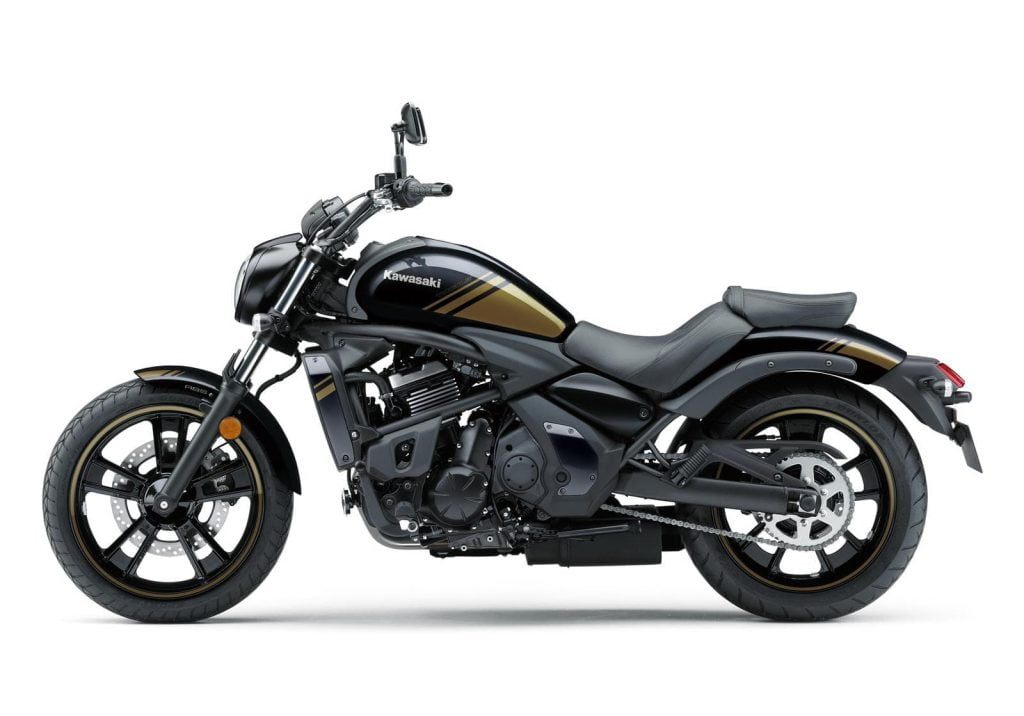


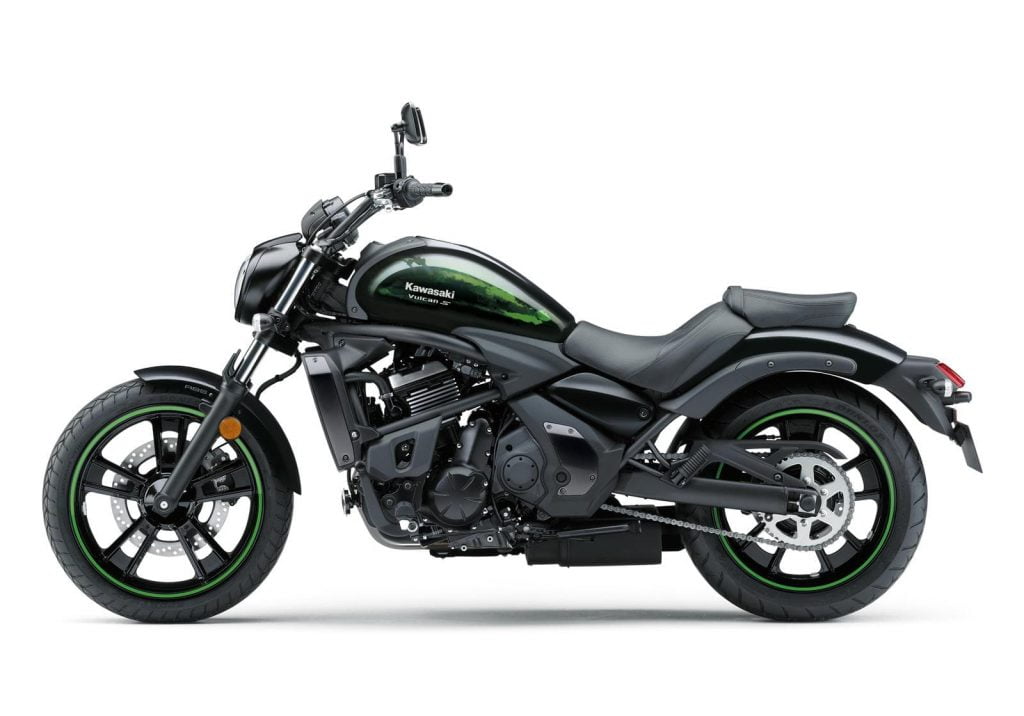










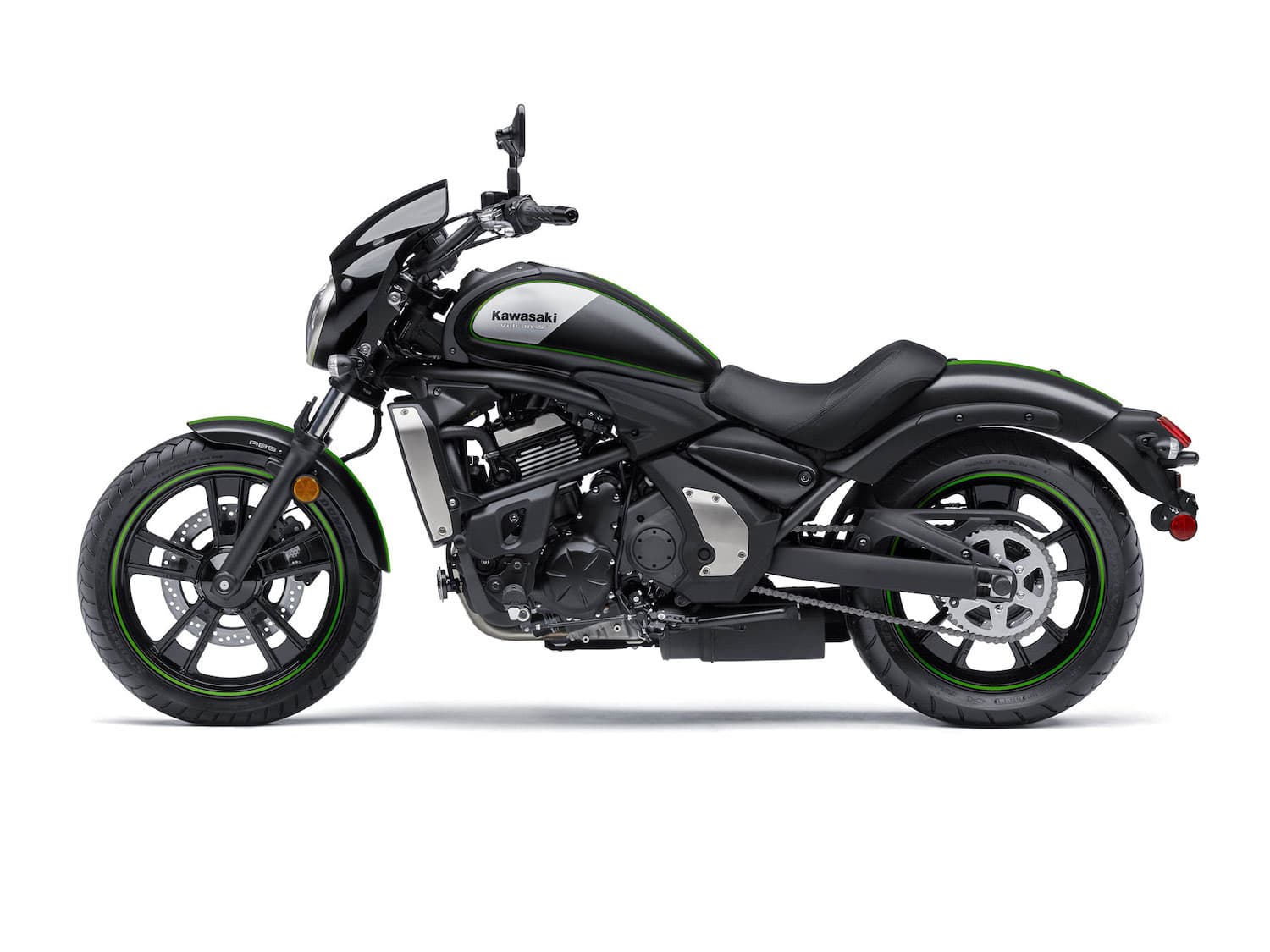

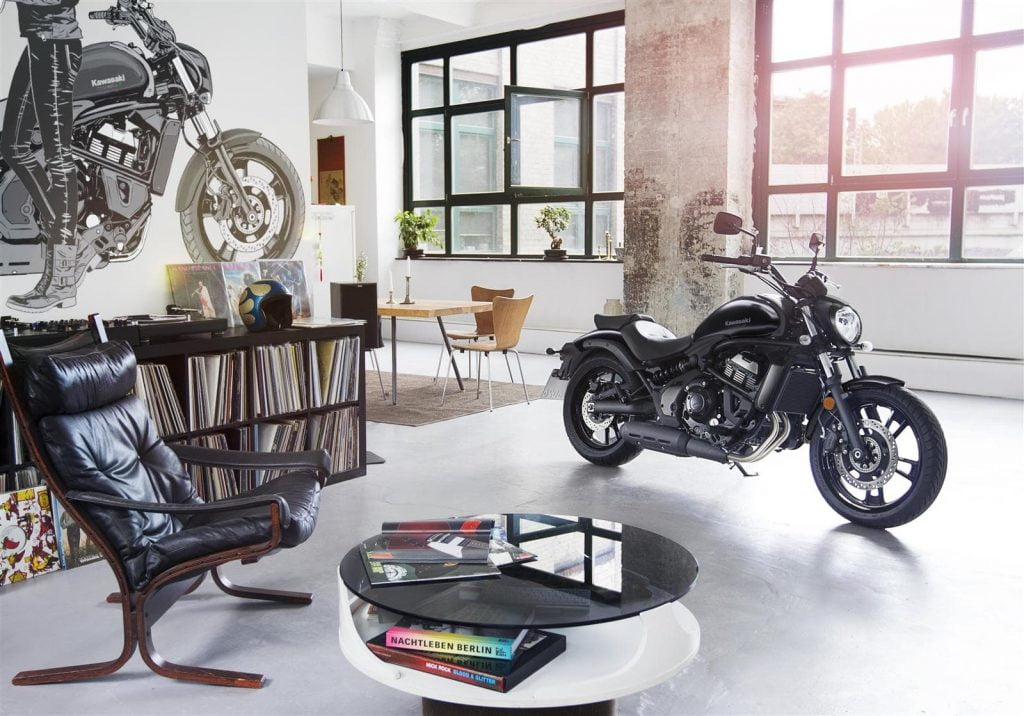


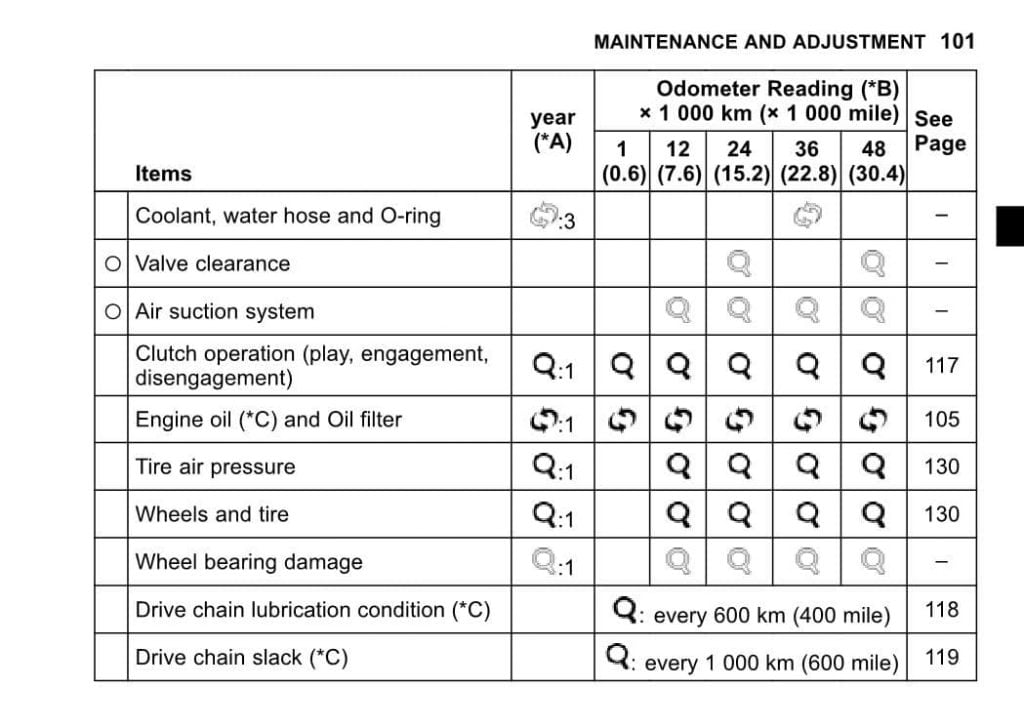






Outstanding information. Thanks a lot.
Johnny BikeSanooK! The Septuagenerian KAWA Vulcan rider born in Suomi-Finland
resident in sunny tropical THAILAND
Glad it’s helpful, enjoy that glorious country!